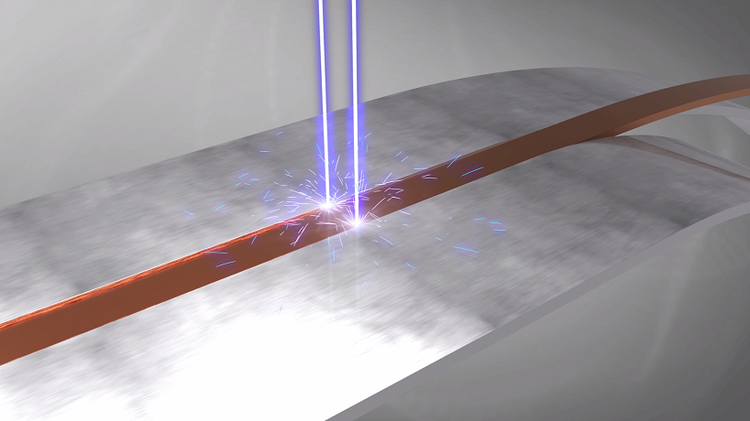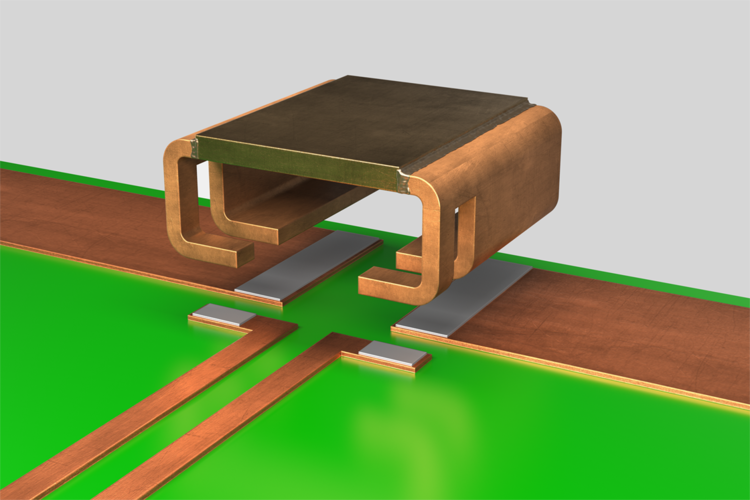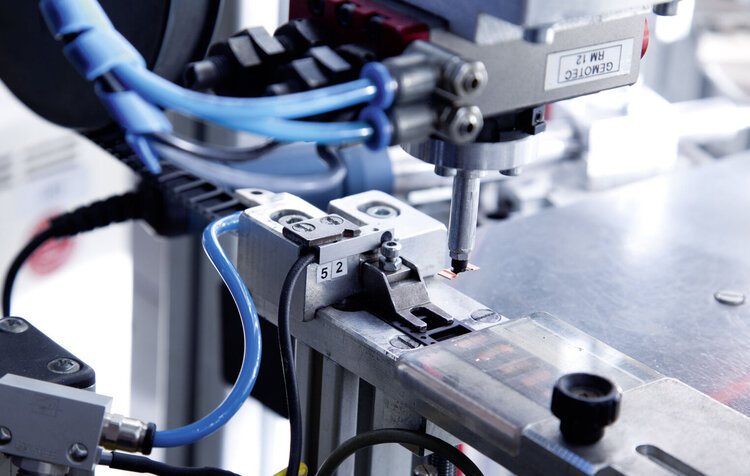The power and precision resistors of the patented ISA-WELD® procedure consist of solid, electron beam-welded composite material made of copper and one of our resistance alloys.
This composite material can be adapted to virtually any shape or application in a punching and bending process and therefore allows for the highest possible flexibility within your application design. These high-current shunts are used in battery management, in the automotive industry, battery charging technology, drive technology and in electronic energy meters for high-current applications.
The power and precision resistors are punched from three longitudinally welded strips, whereby the process is very flexible: The thickness and width of the strips are also as variable as the resistance materials used. The nearly free shaping in the punching, bending and embossing process increases the design options of the application design.
The composite material is continuously welded to the strip in a vacuum by means of electron beam and without material addition, whereby the strips are cleaned during the infeed into the machine and the flanks are freshly machined. In this way, impurities or oxides are avoided in the weld seam and physically or metallurgically very different materials are welded fault-free and in a cost-optimized manner.
A special advantage is the narrow welding zone with about one-third of the material thickness. The transition occurs abruptly, which minimizes the influence of the alloying zone on the resistance value and the electrical properties of the measuring resistance. Your advantage as a user: the connection of resistance material and copper no longer has to be independently manufactured during the component assembly on the printed circuit board or in the bus bar.
The comparatively low feed resistance of the copper connections ensures that the total resistance value is only insignificantly higher than the actual measuring resistor.
The overall load is thus reduced to a minimum. In addition, the heat generated in the resistance material is very efficiently discharged or stored in the adjacent copper connection with its high thermal conductivity and capacitance.
The solid copper connections additionally ensure an even current density and heat distribution in the resistor due to its extremely high electrical conductivity. Hot spots are thus avoided and a high pulse and continuous load-capability is achieved.



